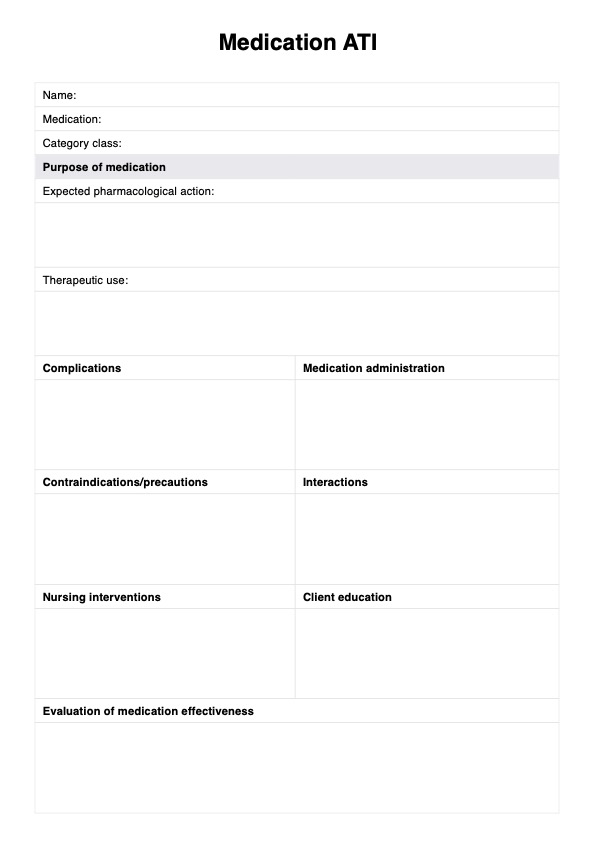Creating a Medication ATI template involves detailing medication names, dosages, administration routes, side effects, and nursing implications.

Medication ATI Template
Learn how to organize and understand information about various medications for exams and clinical practice with a Medication ATI template.
Use Template
Medication ATI Template Template
Commonly asked questions
Aside from being a learning template, Medication ATI Templates are used in various healthcare settings for documenting and managing patient medication information.
Medication ATI Templates are used to record comprehensive medication data, ensuring safe administration and patient understanding.
Nurses, pharmacists, and other healthcare professionals typically create Medication ATI Templates for patient care.
EHR and practice management software
Get started for free
*No credit card required
Free
$0/usd
Unlimited clients
Telehealth
1GB of storage
Client portal text
Automated billing and online payments











